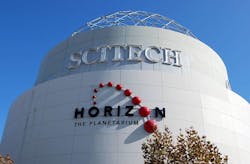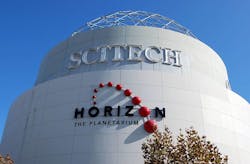Focus on science and technology advances aerospace industry globally, boosts Australian space segment
Guest post contributed by Auvisa.org
The aerospace market continues to grow year over year at a steady pace with no signs of slowing. Industry analysts predict that the only challenge the aerospace community is likely to face relates to manufacturing and production. Attentions, therefore, are increasingly focused on the global supply chain, workflow efficiencies, and the workforce. Academia and industry are adopting an integrated approach to boosting manufacturing and engineering education throughout the globe to ensure competence and excellence in aerospace. This is the focus of aerospace research, development, and technology professionals gathering at SciTech 2016.
SciTech promotes excellence in manufacturing both for industry and society by providing manufacturing education, which has been identified as a major driver to achieving excellence. Competence needed by the aerospace industry and technological skills provided by the university curricula has created an economic, social, and technological change pace gap. This requires an increasingly integrated approach by academia and industry in order to afford the problem of engineering competencies’ obsolescence.
SciTech 2016 – Why Participate?
SciTech is the largest event for aerospace research, development, and technology in the world. The SciTech 2015 technical program contained more than 2,000 technical papers on more than 400 high impact topics. The participant consisted of more than 3,400 individuals which included 1,000 students. These individuals were drawn from 1,000 corporate, academic, and government institutions in over 42 countries. In SciTech 2016, it is expected to attract even more participants.
SeanMack (CC BY-SA 3.0)
Topics Normally Addressed During SciTech Forums
There are various topics which are of interest in SciTech forums. This includes:
· Science and Technology Policy
· International Aerospace
· The Future of Design
· Diversity and inclusion in the Aerospace Workforce
· Entrepreneur Aerospace
· Climate change and National Security
· Improving business skills and business processes for aerospace technical community
· Big Data Analytics in Aerospace
· Advanced manufacturing and its impact on the design process of the future
· The digital systems model: the new frontier in aerospace and defense acquisition
· Aerospace vehicle technology trends
· NASA research plans for assured autonomy for aviation transformation
How Can This Help Individual Develop Next Generation in Aerospace
SciTech promotes excellence in manufacturing both for industry and society by providing manufacturing education which has been identified as a major driver to achieving excellence. Competence needed by the aerospace industry and technological skills provided by the university curricula has created an economic, social, and technological change pace gap. This requires an increasingly integrated approach by academia and industry in order to afford the problem of engineering competencies’ obsolescence.
SciTech is the best vehicle to develop a new archetype of human capital to face the requirements of intelligent and sustainable manufacturing in the aerospace market. This is by providing education to meet the challenges in terms of “who” - the profile for the generation of aerospace engineers; “what” - the new system for education and its contents, and “how” - innovative learning approaches and strategy to incentive the development of competence.
How will It Benefit Australia’s Economy?
Manufacturing is defined as the process of converting raw materials into finished goods with the support of machines, tools, energy and labor to satisfy human needs. Manufacturing is responsible for increasing wealth and the availability of affordable products for consumers who in turn, demand more products and services.
In Australia, manufacturing activity represents approximately 21% of GDP and involves about 20% of all jobs. With an addition of this knowledge learned at SciTech 2016, there will be an increase in manufacturing of aerospace in Australia, thus creation of jobs and a boost to the GDP. The increase will automatically lead to affordable/cheaper aero services thus, other companies which are interdependent on the aerospace industry will see a boost in their sales.
Aerospace Community in Australia
Australia and Australian scientists have made many contributions to space science. This SciTech 2016 will be in line with the Australian vision of 2010-2019; “build Australia a long-term, productive, presence in Space via world-leading innovative space science and technology, strong education, and outreach, and international collaborations”. The Australian scientists and student scientists will be able to learn more about aerospace by expanding their knowledge through learning from other experts engineers and scientists as they share latest research and development findings in the forum. In the plenary and interactive forums during the SciTech 2016, they will be able to learn what lies ahead when senior leaders in the industry from across the world discuss their programs and business challenges during the plenary and forum 360. Networking, discussing challenges and sharing ideas during technical sessions, luncheons, social activities, and networking breaks will impact positively to the aerospace community in Australia as they will be able to unlock some of the challenges they are encountering in the industry.
Top Trends in Australian Aerospace
Space science impacts daily on our lives, whether through communication and navigation, our weather reports or monitoring of the state of our planet. It has allowed us to leap beyond earth to explore nearby planets and beyond and provided a new understanding of the evolution of the universe and our position in it. Australia and Australian scientists have made many contributions to space science since the 1950s. What are some of Australia top trending in this field and what have they done for Australia?
· National Committee of Space (NCS) which is tasked with exploring the potentials for Australian involvement in matters aerospace.
o NCS links Australian universities, government departments, domestic and international industry
· Australia has world-leading space scientists doing visionary, state of the art, innovative science and technology research.
o Queensland in Australia is home to nearly 30% of Australia’s aviation and aerospace companies; 30% all Australian pilots come from Queensland; 23% of Australia’s aviation and defense-related jobs comes from Queensland
· Australia’s airports are strategically placed, with accessible industrial and located both on and offsite. Airports are located mostly in Queensland, Mackay, Gladstone, Toowoomba, Charleville, Roma, Emerald, Longreach and Mount Isa.
Statistical Data from Leading Airlines
· Aviation Australia currently provides engineering and cabin crew training to over 60 airlines and aerospace companies, government, defense forces and regulatory authorities in countries around the world;
· Regional passenger numbers have increased by 67% over the past 10 years;
· Over 4 million Australia rely on regional air services
Aerospace is a wide market in Australia which really boosts the economic development of the country. The country has invested heavily in infrastructure, education, and several other things related to aerospace. In 2011-2012, 41% of Aviation Australia’s revenue was from its export products. This shows that aerospace is one of the core industries that are boosting the robust developing economy of Australia.
This post is brought to you by David from Auvisa.org. Auvisa.org was founded in 2011 by migration lawyers and it is responsible for the best service and professional advice on Australian visa application process. It has helped thousands of applicants to get visa to Australia. David is an aerospace enthusiast. He minored in conceptual design and aerodynamics in his university education.

